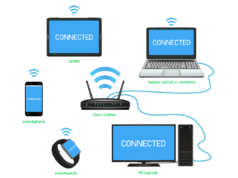DVR cards may look similar to standard computer video cards, but they function quite differently. These cards are designed to record and display information from multiple surveillance cameras simultaneously. They are installed into a computer to transform it into a digital video recording (DVR) system.
Typically used in surveillance setups, DVR cards are responsible for processing information from security cameras and storing it on a hard drive. The cards usually have multiple video out ports, which allow cameras to be connected directly to the card. Once installed, the card’s software enables the user to record and view camera signals in real time.
The quality of storage depends on the user’s needs. DVR cards offer different frames per second (fps) ranges, including 30, 60, 120, 240, and 480. The fps determines the length of time the recording can be done for, and for an 80GB hard drive, recording can range from 80 hours to 320 hours, depending on the fps setting.
Older DVR cards supported a limited number of cameras and required the installation of multiple cards to support additional cameras. This caused a high demand on the computer’s memory and often resulted in system crashes. However, modern DVR cards have inbuilt processing power that reduces the workload on the computer and enables support for more cameras.
With their advanced features, DVR cards are revolutionizing surveillance and monitoring. In the future, they may completely replace conventional surveillance systems.










